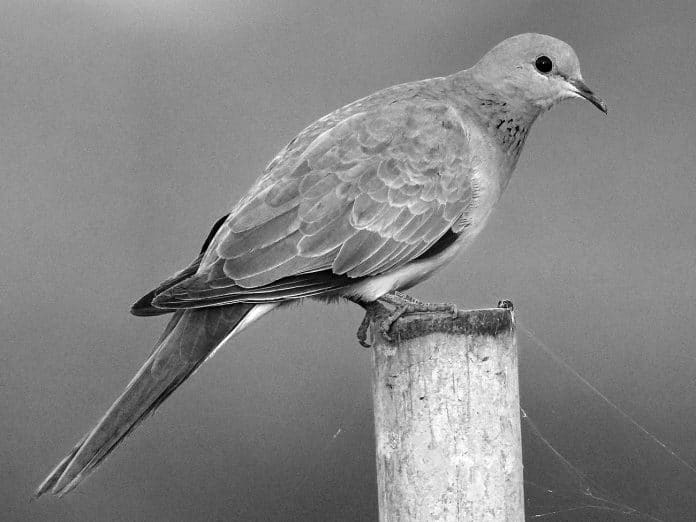Laughing Dove: A Melodious Echo Through Tanzania’s Wilds
Introduction to the Laughing Dove
The Laughing Dove in Tanzania (Spilopelia senegalensis) is a small bird species that is native to sub-Saharan Africa, the Middle East, and the Indian subcontinent. It is a member of the dove family, Columbidae, and is closely related to other dove species such as the Collared Dove and the African Mourning Dove.
The Laughing Dove is a small bird, measuring around 25 centimeters in length and weighing between 80 and 140 grams. It has a grayish-brown body, with a distinctive pinkish-brown underbelly. The wings are marked with black and white spots, and the tail is long and pointed. The Laughing Dove in Tanzania is a ground-dwelling bird, and can often be seen foraging for food on the ground.
Habitat and Distribution of the Laughing Dove in Tanzania
The Laughing Dove is found throughout Tanzania, from the coastal regions to the inland forests and savannas. It is most commonly found in areas with shrubs and trees, as well as around human settlements such as villages and towns.
The Laughing Dove is a migratory bird, and can be found in Tanzania year-round. During the breeding season, which occurs between November and June, the Laughing Dove can be found in pairs or small groups. Outside of the breeding season, it is more commonly found in larger flocks.
Physical Characteristics and Behavior of the Laughing Dove
The Laughing Dove is a small bird, but it is also a highly adaptable and intelligent species. It is known for its distinctive cooing call, which is a low-pitched, melodious sound that is often described as “laughing”. The Laughing Dove is also known for its ability to mimic other bird species, as well as human speech.
The Laughing Dove is a ground-dwelling bird, and can often be seen foraging for food on the ground. It feeds on a variety of seeds, fruits, and insects, and is able to survive in a wide range of habitats and environments.
The Melodious Call of the Laughing Dove
One of the most distinctive features of the Laughing Dove is its melodious call. The call is a low-pitched, rhythmic cooing sound that is often described as “laughing”. The Laughing Dove’s call is a common sound in Tanzania’s wilds, and can often be heard throughout the day.
The Laughing Dove’s call is not only a beautiful sound, but it is also an important part of the bird’s behavior. The call is used to attract mates, establish territory, and communicate with other birds in the flock.
Conservation Status and Threats to the Laughing Dove
The Laughing Dove is a species of least concern on the IUCN Red List of Threatened Species. However, like many bird species in Tanzania, it is facing a number of threats to its survival.
Habitat loss and degradation, due to deforestation, agriculture, and urbanization, are the primary threats to the Laughing Dove’s survival in Tanzania. Climate change, pollution, and hunting are also contributing to the decline of this species.
Laughing Dove Watching in Tanzania: Best Locations and Tips

If you are interested in seeing the Laughing Dove in Tanzania, there are a number of locations where you can find this bird. The best places to see the Laughing Dove are in the savannas and woodlands of Tanzania’s national parks, such as Serengeti National Park and Tarangire National Park.
To increase your chances of spotting the Laughing Dove, it is best to visit these parks during the breeding season, between November and June. You should also look for areas with shrubs and trees, as the Laughing Dove prefers these habitats.
Other Bird Species You Can Spot Alongside the Laughing Dove in Tanzania
Tanzania is home to a wide variety of bird species, and if you are birdwatching in the country, you are likely to see a number of other species alongside the Laughing Dove. Some of the other bird species you can spot in Tanzania include the African Fish Eagle, the Lilac-breasted Roller, and the Grey Crowned Crane.
Laughing Dove Research and Conservation Efforts in Tanzania
There are a number of organizations in Tanzania that are working to research and conserve the Laughing Dove and other bird species in the country. These organizations include the Tanzania Bird Atlas, the Wildlife Conservation Society, and the Tanzania Wildlife Research Institute.
These organizations are working to monitor bird populations, study bird behavior and habitat use, and develop conservation strategies to protect these species for future generations.
Conclusion: Embracing the Melodious Echo of the Laughing Dove in Tanzania
The Laughing Dove is a beautiful and unique bird species that is found throughout Tanzania’s wilds. With its distinctive cooing call and adaptable behavior, it is a bird that is loved by many birdwatchers and wildlife enthusiasts.
However, the Laughing Dove, like many bird species in Tanzania, is facing threats to its survival due to habitat loss and degradation, climate change, and other factors. It is important that we work to protect this species and its habitat, so that future generations can continue to enjoy the melodious echo of the Laughing Dove in Tanzania’s wilds.
For more articles related to Wildlife in Tanzania (Animals), click here!

































